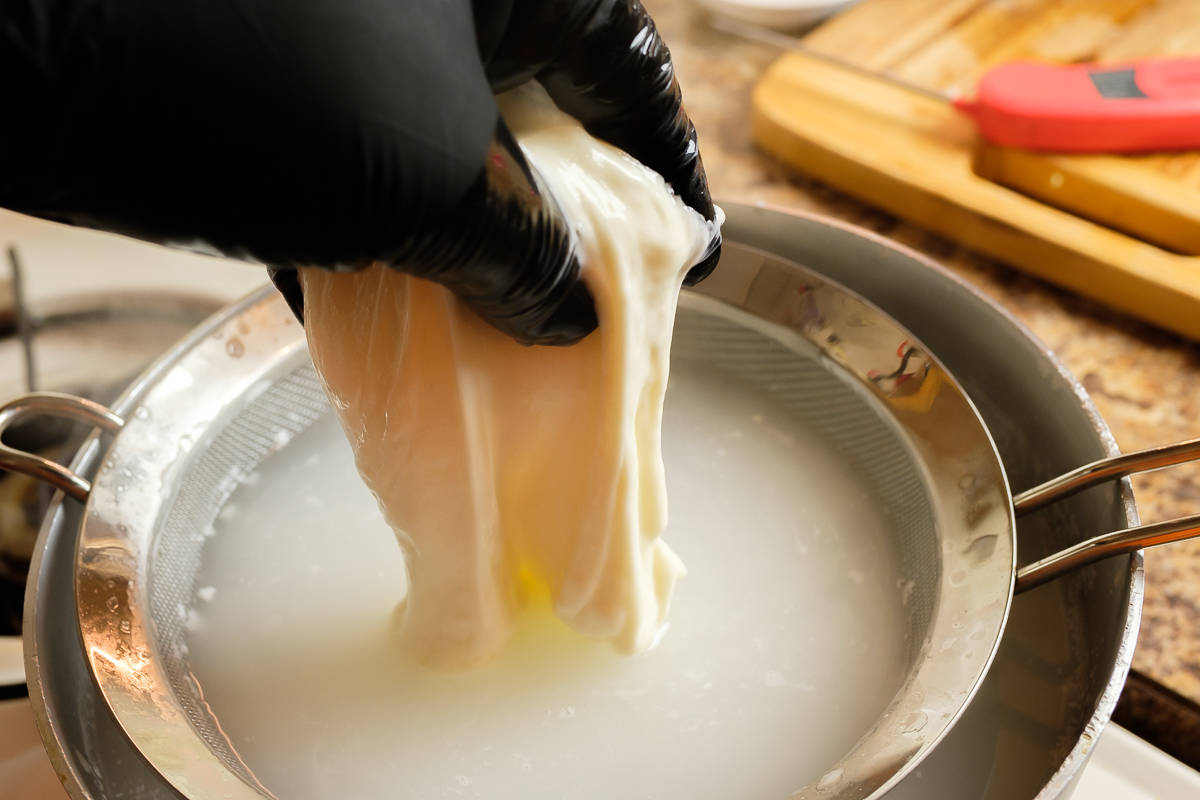
Homemade Grass Fed Raw Milk Mozzarella certainly is a mouthful. A mouthful of delicious accomplishment! I’ve always wanted to make cheese at home so I thought I’d give it a shot with some raw milk I picked up at the Fair Food Farmstand in Reading Terminal Market.
Pennsylvania is one of 30 states (technically it’s a commonwealth) where raw milk sales are legal. In some states you can buy raw milk at retail stores, some states require you buy it direct from the farmer, and other states require you buy in to a cow-share. Check out this page to find your state’s raw milk regulations.
Raw milk, by definition, is milk that has not been pasteurized. That’s the process where milk is heated to 161°F for 15 seconds to kill off pathogens. These pathogens can harbor bacteria such as E. coli, Listeria, and Campylobacter in people with weak immune systems. The Centers for Disease Control and Prevention basically states, “do not fucking drink raw milk, you moron.” Between 2007-2012, 26 states reported 81 outbreaks caused by raw milk; 30 (2% of all cases) between 2007-2009 and 51 (5% of all cases) between 2010-2012. This represents a 400% increase from 1993-2006. Pennsylvania has had more outbreaks (17) from raw milk than any other state; nearly 10%.
On the other hand, there’s anecdotal evidence that suggests otherwise. Raw milk farmers will tell you that pasteurization kills off all the good pathogens and consuming raw milk is good for allergies, asthma, promoting healthy gut bacteria, and it strengthens the immune system. There’s a 2003 study published on the FDA site that classifies listeria contamination in raw milk as moderate. Hot Dogs, seafood, and fruit are classified as high levels of contamination. An October 2011 study published by the Journal of Allergy and Clinical Immunology concluded that, “The findings suggest that the protective effect of raw milk consumption on asthma might be associated with the whey protein fraction of milk.”
The conclusion of Eat Up! Kitchen is that, with anything in life, (1) your perspective will skew your judgement and (2) enjoy all things in moderation. Now, on to the Mozz!








Raw Grass Fed Milk Mozzarella
Ingredients
Method
- Dissolve 3/4 tsp citric acid in 1.2 cup water.
- Combine 1/8 cup water and 8 drops of rennet.
- In a large heavy pot, add the milk and the citric acid mixture and warm over medium heat, stirring occasionally, until temperature reads 90°F.
- Remove pot from heat and add the rennet mixture. Stir for 30 seconds. Cover and rest for 10 minutes.
- While you wait, heat another pot of water to 185°.
- Using a long knife, cut the curds in a 1 inch grid pattern.
- Place pot back on medium heat and stir gently trying not to break up the curds. When the mixture reaches 105°F, remove from heat and set aside to rest for 5 minutes.
- Prepare a medium bowl filled with ice water to rest the cheese. Put on food rated rubber gloves.
- Dip a fine mesh strainer in to the pot to remove all the curds.
- In the second pot of hot water, rest the strainer with curds for 2-3 minutes. Reheat the curds to a pliable state so you can knead and fold them. After folding for a minute, add the kosher salt. Reheat in hot water when the curds begin to cool. Continue folding until the curds are elastic and smooth.
- Form cheese in to a ball and place in ice water bath. Should be cool and ready to eat in a few minutes.
Notes





I took the suggestion of adding organic plain yogurt to my fresh cow milk. The curds set up fabulous, but would not stretch. I need the stretch!
Skip the citric acid and add 1 tablespoon of organic plain yoghurt per liter and let ripen in cool to warm milk for an hour or so before raining the heat and adding rennet, Much better flavor.
Well, that is glorious to behold! Always wanted to try and haven’t yet. “The revolution will not be pasteurized”. Bumper sticker in The Berkshires, MA.
You haven’t?? I also had a pint of goat milk to make cheese but after a half gallon of cow milk I realized it’s too much work unless you’re doing a gallon.
You haven’t?? I also had a pint of goat milk to make cheese but, after a half gallon of cow milk I realized that unless you’re doing a gallon, it’s not worth it.
I put the citric acid in and the milk started to clump right away. Loose little clumps. I don’t know if it will set properly. But I’ll try.